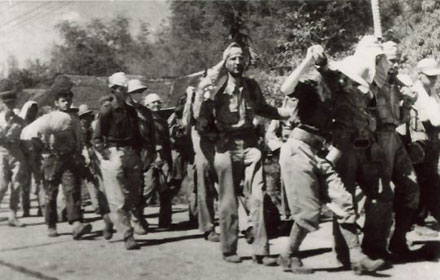Greenville, Texas -- The fifth and final 2025 lecture of the Texas World War II History Roundtable will be held on October 23 at 7:00 p.m. in the Grand Hall of the Audie Murphy/ American Cotton Museum , Greenville, Texas. U.S. Naval War College adjunct faculty member Jonathan Parshall will speak on Options for Peace, 1945: War Termination Scenarios and the Numbers behind them.
Parshall, a historian and author will explain the last days of the war in the Pacific at the quarterly lecture for the Texas World War II Roundtable.
The October 23 program will begin at 7:00 p.m. in the Audie Murphy/American Cotton Museum, Greenville, Texas. Admission is free and all are invited to attend. The sponsor is Dr. Jerry Ransom, mayor of Greenville.
The end of World War II came to a messy conclusion on August 18, 1945. Within a few days many from Northeast Texas who were prisoners of war in the Pacific got the word. For example, Army Air Force Private Oliver C. Allen, captured near the small island of Corregidor in 1942, become a part of the infamous March of Bataan, and was at a prison facility in Mukden, China.

Taken prisoner also on The Philippines were Sgt. Hubert Carroll of Blossom, along with Texas A&M head yell leader, Lt. Col. Tom Dooley of McKinney. The pair served respectively as an orderly and aide to General Jonathan M. Wainwright IV. All were withering away at Xi’an in Manchuria. They had been in captivity 1,201 days when rescued by the Soviets.
Lt. Col. Edgar Wright of Paris, Texas spent nearly three years with Filipino guerillas, supplied now and then by allied submarines. Besides others, hundreds of Texans who were part of the 131st Field Artillery, or more commonly called the Lost Battalion of the 36th Texas National Guard Division, were captured by the Japanese in or near Java in March 1942. In mid-August three years later they began to see packages dropped into their various compounds by American aircraft. Within a month or so most were back on the West Coast.
The end did not come smoothly. Following up a massive daily firebombing of many Japanese towns and a long study of what a disaster an invasion would bring to all sides of the dwindling action, in July, while at Pottsdam, President Harry Truman was told atomic bombs were ready. One was dropped on Hiroshima August 6. No surrender was forthcoming, but the Russians were preparing an onslaught too. A good weather break came on August 9, so a plutonium bomb was released over Nagasaki. Having forty percent greater power than the first, up to an estimated 140,000 might have eventually died from that explosion.
Surrender finally came.
This will include discussing the option of a blockade or invasion of Japan, the use of an atom bomb, and reluctance of the Japanese military leadership to surrender even after two atomic bombs were dropped. The event is sponsored by Jerry Ransom, the mayor of Greenville. The public is invited. There is no fee.


